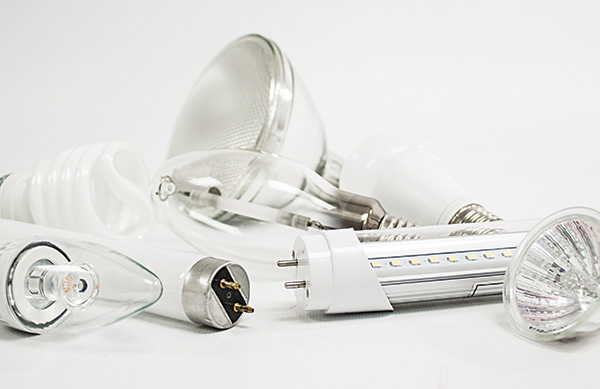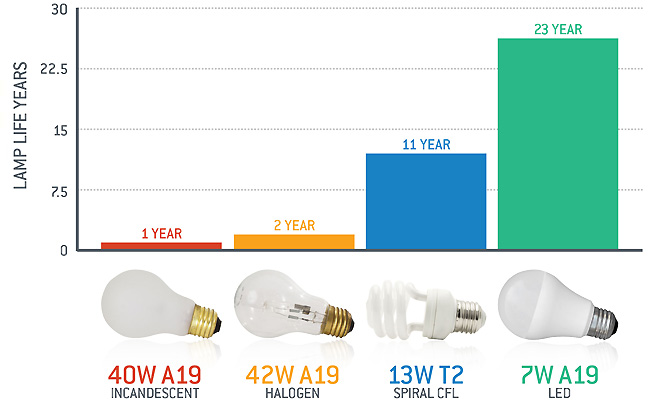
We at Fusion Lamps understand that the quality of light can effect the mind, the body and also give us the ability to visually perceive objects as they were intended.
Lighting is a blend of art and science that is being driven by the continuous evolution of design and new technologies. There are several educational sections that can be found within this catalogue. By using these learning tools, you’ll expand your knowledge on the various facets of light and lighting. Continuing to increase your knowledge of lighting is fundamental, as different light sources can dramatically change the look and feel of a space. Fusion Lamps understands the importance of selecting the right light source for your unique application. This catalogue has been designed to assist you in that process, by giving you a basic knowledge of light, allowing you to choose the best lamp for your specific application.
THE COLOUR OF LIGHT
The “colour” of light sources is derived from a complicated relationship determined by a number of measurements, including correlated colour temperature (CCT), colour rendering index (CRI), and spectral distribution. In general, colour is most accurately described by a combination of CCT and CRI
Correlated Colour Temperature (CCT)
The first factor in choosing a lamp colour is the correlated colour temperature. The CCT rating is an indication of how “warm” or “cool” the light source appears. The higher the number, the cooler the lamp colour will appear. The lower the number, the warmer the lamp colour will appear.
Spectral Energy Distribution
When we look at a light source, the eye “perceives” a single colour. In reality, we are seeing literally thousands of colours and hues made up of a combination of different wavelengths of light. These different combinations and the relative intensity of various wavelengths of light are used to determine the CCT and CRI of a light source.
A very warm incandescent colour.
Used as a general warm, white light source, for retail or interior applications.
 3700K-4000K
3700K-4000K
A neutral white light source used for general lighting, factories, parking lots, warehouses.
A moderately high CCT day light source used in general and retail lighting applications.
A moderately high CCT day light source used in general and retail lighting applications.
10,000K - A very high CCT, daylight light source, used in horticulture and aquarium applications.
colour Rendering Index (CRI)
In general, CRI is a numeric indication of a lamp’s ability to render individual colours accurately relative to a standard. The CRI value is derived from a comparison of the lamp’s spectral distribution to the standard (e.g. a black body or the daytime sky) at the same colour temperature

Above is a comparison test using 4 different lamps. All the same colour temp but with different CRI. You can see that as the colour rendering index goes down, so does the lamps ability to bring out rich colours in the apple.
It should be noted that CRI’s ability to predict colour appearance has been criticized in favor of measures based on colour appearance models, such as CIECAM02 and, for daylight simulators, the CIE Metamerism Index.1 CRI is not a good indicator for use in visual assessment, especially for sources below 5000 kelvin.2,3
Numerically, the highest possible CRI is 100, for a black body (incandescent lamps are effectively black bodies), dropping to negative values for some light sources. Low-pressure sodium lighting has negative CRI; fluorescent lights range from about 50 for the basic types, up to about 90 for the best tri-phosphor type. Typical LEDs have about 80+ CRI, while some manufacturers claim that their LEDs have achieved up to 98 CRI.4
The Life of Your Lamp
Lamp life is an important consideration when purchasing a new, retrofit, or replacement lamp. Two very different and distinct terms describe life: “rated life” and “economic life.”

Rated Life Rated, or average (median), life for lamps is a value of lamp life expectancy based on laboratory and field tests of representative lamps, operating on approved systems, with a burn cycle of at least 10 hours per start. The average life is determined when 50% of the lamps initially installed are still operating.
Various operating conditions affect lamp life. One key factor is operating position. Position-oriented lamps (designed to operate in one specific position) are tested and rated based on that designated position. Operating these lamps in any other position can dramatically shorten life, reduce lumen output and cause colour shift. Lamps designated as universal can be operated in any position; however, life expectancy and lumen output are sacrificed in certain positions. Published “rated life” for universal lamps is based on operation in the vertical position. “Rated life” for universal lamps operated horizontally is 75% of the published rating.
Shorter operating cycles reduce life. At operating cycles shorter than 10 hours per start, life will shorten as follows:
- 5 hrs/start: Life is 75% of rating
- 2.5 hrs/start: Life is 55% of rating
- 1.25 hrs/start: Life is 40% of rating
Other factors, alone or in combination, that can also reduce lamp life include:
- High or low line voltages
- Marginally-operating control devices (ballasts, capacitors, ignitors, dimming systems, etc.)
WHERE TO BUY
Fusion Lamps products can be purchased exclusively from Torbram Electric Supply. With over 66 stores in Canada, we are serving areas near you.
Store Locator

